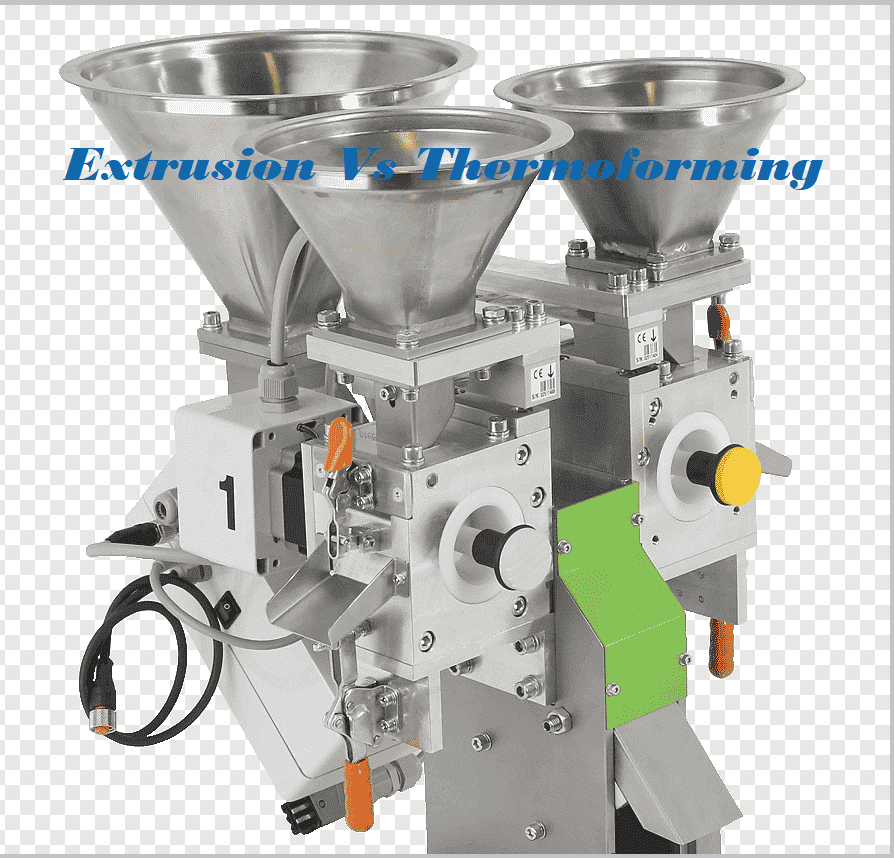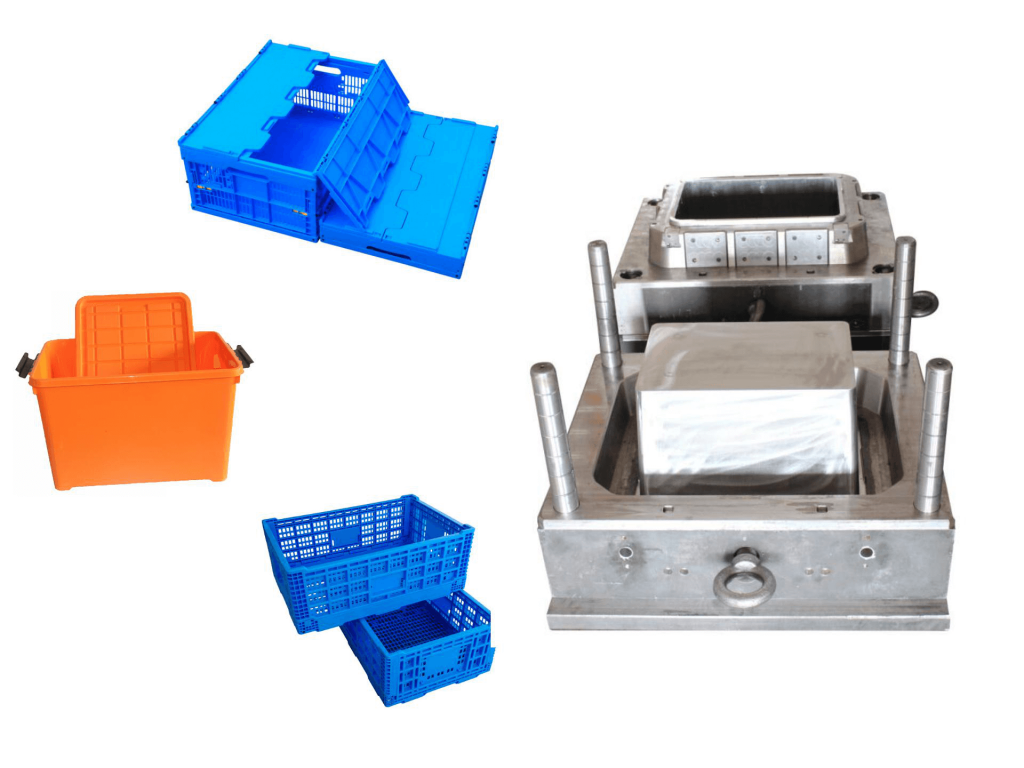プラスチック成形部品メーカー:熱成形と押出成形の違い
プラスチック成形部品メーカー:押出成形と熱成形
プラスチック成形部品メーカーは、成形技術に関して多様性を提供しています。射出。 さらに2つの効果的な成形技術、すなわち熱成形と押出成形があります。
Both of these techniques offer a number of benefits. They come with their advantages and disadvantages. Although, both techniques offer to end up moulding plastic, but the way they go about it is different. In this article, we are going to talk about the difference between these two techniques.

What a Plastic Molded Parts Manufacturer has to say about these techniques?
Having a basic understanding of both these techniques would help you make a better decision when it comes to choosing a plastic moulding method for your custom plastic parts.
Extrusion Molding
The process of extrusion molding is similar to that of injection molding. However, there is a slight difference, it tends to produce a long continuous shape. In addition, extrusion molding does not use a mold, on the contrary, it uses a die.
To make the parts, the technique squeezes hot raw material via a custom die. To make it easier for you to understand, we can say that it is like squeezing play Doh via a shaped hole. Unlike other molding techniques that put resins into a mould, extrusion puts it directly into the die shape.
So, here the die instead of the mold determines the shape of the desired product.
The Step by Step Process
Step 1: Raw plastic material including powder, pellets, granules are put into a hopper, later the material is shifted into an extruder. It is a hot long cylindrical chamber. To move the material through the chamber, it uses a revolving screw.
There are some extruders more than one revolving screw.
ステップ2: 回転スクリューが作動しており、原材料はホッパーからこの回転スクリューに流れます。 スピニングスクリューの操作には、水平バレルを使用します。
ステップ3: 材料ごとに特性が異なるため、原材料ごとの加熱が異なります。 特定の材料の温度要件が考慮されます。 所望の形状を形成するために、溶融プラスチックはダイを通過します。
これは、加熱されたチャンバーの端にある小さな開口部です。
ステップ4: 冷却の目的で、ダイから押し出されたプラスチックをコンベヤーベルトに配置します。 プラスチック成形部品メーカーは、冷却目的で空気または水を使用できます。
The process is similar to that of the injection molding. However, instead of the mould, here you would be using a die.
Step 5: It is important to design the die for every individual plastic profile. This would ensure the smooth flow of plastic from the cylindrical profile to the extruder. Thus, taking the final shape.
To ensure that the end product offers integrity, consistency in the flow is imperative.
Extrusion Moulding Common Use
If you want the parts to have a cross-sectional profile, use the extrusion moulding technique. For instance, PVC piping, hoses, and the straws. There is no need for the parts to be round. However, it is vital for them to have the same shape along the part’s length.
When you compare the cost of extrusion molding to other moulding process, you will realize that it is cost-efficient. Mainly because of the die and the machine are simple. They lack the complexity that is innate in molds and machines of other moulding processes.
Since it lacks complexity, thus it has its limitation. You can create only a number of products via this particular technique.
Best Uses of Extrusion Molding
You can design and manufacture parts that are simple and have a fixed cross-sectional profile. For instance, products are either have a circle shape and square.
Common Products
- Plastic Gutters
- PVC pipe
- Plastic Decking
- Straws and Hoses
Thermoforming
Thermoforming is an effective manufacturing process in which the sheet plastic – thermoplastic—is heated to forming temperature. The reason for doing so is to allow the sheet to form the specific shape in the mould.
It later is trimmed to create products. The great thing about thermoplastic sheets is that it comes in a wide range of materials, thickness, finishes, and colors.
To achieve the final product thermoforming does not reply to a certain type of process or a mould. On the contrary, it uses multiple molds along with the different processes to acquire the required shape. For 3D products, it is generally a single 3D mould.
Plastic Mould Parts Manufacturer uses aluminum for the creation of these 3D molds. Since the technique uses less pressure, therefore, it is possible to create parts or components at a lower rate.
Types of Thermoforming
There are two basic types of thermoforming: pressure forming and vacuum forming. Both techniques yield effective results, but there is a slight difference between the two.
Vacuum forming uses pressure and heat to draw the plastic into the respective shape. It first heats the sheet and then places it into the mould. To ensure that the plastic takes the final shape, it is manipulated using the vacuum.
Pressure forming, on the other hand, is similar to a vacuum. However, it has the additional benefit of pressure. With pressure, it is possible to achieve greater details and texture. Therefore, if you have to choose, between the two, pressure forming is the better choice.
Thermoforming Common Uses
Thermoforming, especially the tin-gauge is extremely popular for producing trays blisters, containers, disposable cups, clamshells, lids among other things. It is common among the food as we ass the general retail industry.
For something more sturdy and bigger, manufacturers go with the thick-gauge thermoforming. For instance, it is an effective technique for refrigerator liners, vehicle doors, utility vehicle beds, and dash panels.
Cost and Time of Production
The thermoforming may be an inexpensive plastic moulding technique; however, it does take time. On average, you would need around 8 weeks for the thermoform mold to be ready. After the mold is ready, production starts.
The manufacturing phase is faster. However, do bear in mind that the cost of the technique greatly depends upon the size of the part of the component. For instance, if you want to mold small size parts, it would cost you $20,000 a year.
Whereas, the same amount of parts with a bigger size would cost you $50,000 a year.
You can also check out our article on how to reduce cost per unit.
Plastic Molded Parts Manufacturer Offering the following benefits
Here are the benefits of both Thermoforming as well as the Extrusion molding technique.
Extrusion Molding Advantages
High speed, High Volume
The process is cost-efficient when you want to manufacturer a high number of parts or components. It can also produce parts quickly.
Low Cost
When you compare extrusion moulding to a number of other moulding techniques such as Rotational, you will find it affordable. What more is that it allows the facility to reuse the leftover material, reducing not only the waste outcome but also the cost.
The machinery is robust, it can operate continuously. The manufacturers can enjoy a 24 hours-a-day manufacturing period.
Flexibility
The products come with consistent cross-section; however, it offers considerable flexibility. You can enjoy a number of shapes, sizes, and textures with the extrusion moulding process.
Thermoforming Benefits
Adaptability
Thermoforming offers a number of benefits, design adaptability being on top. The technique offers the flexibility of incorporating all consumer design needs.
Fast Turn-Around Time
Of course, for full-on production, the mold does take some time. However, in the case of the prototype, it can deliver effective results within no time. It offers a fast turn around time.

Material Optimization
With Thermoforming it is possible to optimize materials in order to ensure lower tooling costs as well as cost-effective manufacturing.
Moreover, the technique offers a number of other benefits. It results in a very aesthetically pleasing component or part. The plastic molded parts manufacturer offers paintable plastics, colored plastics, along with several other customization options.



